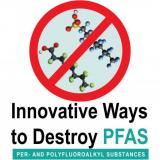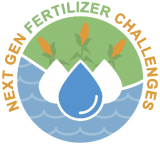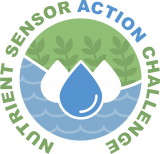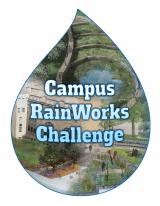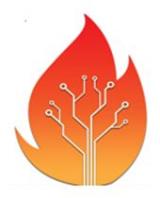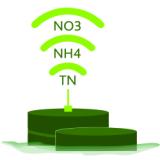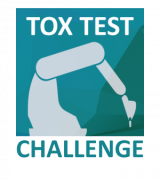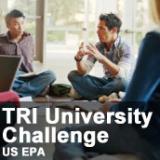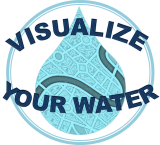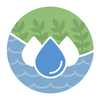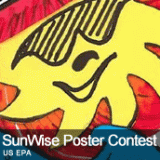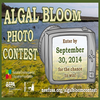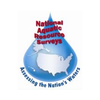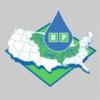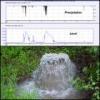EPA Challenges & Prizes
| Challenge Title | Description of challenge | Outcome | Status | |
|---|---|---|---|---|
| EmPOWER Air Data Challenge | In this challenge, EPA’s Clean Air Markets Division (CAMD) is seeking proposals from academic and research institutions for innovative and creative projects using at least one of CAMD's emissions or environmental monitoring datasets. | Winners may receive direct support from EPA CAMD staff experts, recognition and more. For full details, visit the challenge website. | Open through February 22, 2021. | |
| Innovative Ways to Destroy PFAS | The challenge asks solvers to submit detailed plans for a non-thermal way of destroying PFAS in concentrated film forming foam (AFFF), while creating the least amount of potentially harmful byproducts. | Winners may recieve up to $50k, the minimum full award amount is $30k | Closed to applicants, winners announcement early 2021 | |
|
|
EEFs: Environmental and Agronomic Challenge |
This Challenge aims to identify existing EEFs currently on or near-market that meet or exceed certain environmental and agro-economic criteria. |
Winners will receive recognition from EPA and USDA |
Closed to applicants, winners announcement fall 2021
|
|
|
This Challenge aims to identify concepts for novel technologies for fertilizers and other product technology innovations that can reduce the environmental effects from modern agriculture while maintaining or increasing crop yields. Submissions to the Next Gen Fertilizer Innovation Challenge may include technologies that are not currently on the market or technology concepts that are not traditional EEFs and not in commercial use as a fertilizer.
|
Winners will receive minimum $10K award per winner from a total prize purse of $40k and be invited to the showcasing event
|
Ongoing
|
|
| EcoTox Technology Advancing Rapid Gene Expression-based Testing (TARGET) Challenge | This challenge calls for respondents to develop high quality, low cost, technologies/platforms for evaluating global gene expression in samples from four common aquatic toxicity test organisms. | One winner to be awarded $300,000 for their solution | Closed to applicants, winners announcement fall 2021 | |
| ‘See a Bloom, Give It Room’ High School Video Challenge | The Challenge calls for videos from high school students (grades 9-12) that promote public awareness of harmful algal blooms through creative filmmaking. The public safety videos (under 2 minutes in length) should explain how to spot harmful algal blooms and how people and their pets should be safe around them. The contest is open to high school students or teams in EPA Regions 7 and 8: Colorado, Iowa, Kansas, Missouri, Montana, North Dakota, Nebraska, South Dakota, Utah and Wyoming, This includes students in public, private and tribal high schools, and homeschool programs. | Winners will receive a share of the prize purse and have their videos highlighted by EPA | Completed | |
| Nutrient Sensor Action Challenge | EPA and partners seek demonstrations of the effective use of low-cost sensors, innovative partnerships to pilot the sensors and data management, and show how collected data and information can be used in state and local decision-making. | Winners announced Spring 2020 | Completed | |
| Campus Rainworks Challenge | EPA is hosting the sixth annual Campus RainWorks Challenge. This is a green infrastructure design competition for American colleges and universities that seeks to engage with the next generation of environmental professionals, foster a dialogue about effective stormwater management, and showcase the environmental, economic, and social benefits of green infrastructure practices. |
Registration open September 1-30, 2018. Submissions due December 14, 2018. Winners announced Spring 2019. |
Registration closed, Submissions due 12/14/2018 | |
| Wildland Fire Sensors ChallengeExit | EPA and five other federal agencies issued this challenge to improve smoke monitoring and provide data to protect public health. Sensor developers and researchers were encouraged to develop new and innovative air sensor monitoring technologies to measure air pollutants from smoke during wildland fires. | Winners announced. | Completed | |
| Advanced Septic System Nitrogen Sensor ChallengeExit | EPA and partners seek to identify and spur development of technologies to monitor nitrogen concentration in effluent from wastewater treatment systems. This will help ensure that advanced septic nitrogen removal system are effective. |
Prototype testing continues. Interim award given and final award scheduled for Spring 2021. |
Completed |
|
| Regulations.gov Data Challenge | Use TopCoder Exitto receive an application that makes regulations of interest more discoverable and provide commenters with useful information. | Conducted in a live competition environment November 2016. | Completed | |
| Transform Tox Testing Challenge Stage 2 Exit | EPA and the National Institutes of Health(NIH) launched a challenge that to award up to $1 million to improve the relevance and predictivity of data generated from automated chemical screening technology used for toxicity testing. | Completed | ||
|
2012 - 2016 |
This is a green infrastructure design competition for American colleges and universities that seeks to engage with the next generation of environmental professionals, foster a dialogue about effective stormwater management, and showcase the environmental, economic, and social benefits of green infrastructure practices. The challenge is hosted annually. | |||
|
2016 TRI University Challenge Exit 2016 |
EPA is issuing a challenge to the academic community. Find new, innovative, and creative ways to use Toxics Release Inventory (TRI) data and related information to promote more informed decision-making and action on the part of communities, manufacturers, and government. | Winners Announced | Completed | |
|
2016 |
In collaboration with U.S. Geological Survey, high school students in the Great Lakes and Chesapeake Bay States are challenged to use open government data sources to create compelling, innovative, and comprehensible visualizations. | Winners announced April 21, 2016. | Completed | |
|
Transform Tox Testing Stage 1 Exit 2016 |
EPA and the National Institutes of Health launched a challenge that will award up to $1 million to improve the relevance and predictivity of data generated from automated chemical screening technology used for toxicity testing. | Stage 1 closed, see Stage 2 above | Completed | |
|
Nutrient Sensor Challenge - Phase 2 Exit 2015 |
Sensor-developer teams from Phase 1 of the challenge were asked to submit applications for final verification testing of nitrogen and phosphorus sensors. | Winners Announced March 3, 2017 | Completed | |
|
Visualizing Nutrients Challenge Exit 2015 |
The USGS, US EPA, and Blue Legacy International challenge Solvers to utilize open government data sources to create compelling, innovative, and comprehensible visualizations that inform individuals and communities on nutrient pollution and inspire them to take action. | Winners announced August 2015. | Completed | |
|
Nutrient Sensor Challenge - Phase 1 Exit 2014 |
The Nutrient Sensor Challenge aimed to accelerate the development, production, and use of affordable, reliable, and accurate nutrient sensors. These sensors will enable automated and high-resolution nutrient monitoring in aquatic environments ranging from freshwater lakes and streams to the coastal ocean. |
See Phase 2 above | Completed | |
|
2015 |
EPA is issuing a challenge to the academic community. Find new, innovative, and creative ways to use Toxics Release Inventory (TRI) data and related information to promote more informed decision-making and action on the part of communities, manufacturers, and government. | Winners announced | Completed | |
|
SunWise with SHADE Poster Contest 2012 - 2014 |
This challenge encouraged young students (K-8) to submit original, creative posters illustrating ways to prevent skin cancer and raise sun safety awareness. | Winners Announced | Completed | |
|
|
Algal Bloom Photo Contest 2014 |
Facebook and Instagram were used to document algal blooms spotted in waters. Conestents submitted photos of algal blooms where they live, vacation, and recreate with a hastag | Winners Selected | Completed |
|
|
National Aquatic Resource Surveys Campus Research Challenge 2014 |
This challenge encourages students to develop proposals for research projects that find innovative was to use National Aquatic Resrouce Survey data about the condition of the nation's waterways. The goal is to enhance external, innovative research and information development to support enhanced water management at multiple scales. | Phase I winners announced. | Completed |
|
2013 |
Participants were asked to submit innovative, next-generation ideas that could lead to a fundamental change in the way we manage or recover nutrients. |
Three winners proposed various solutions including new modeling, real-time management, and paid incentives. |
Completed | |
|
Real-Time Sensor to Monitor Sewer Overflows Exit 2013 |
This challege look for ideas for an efficient, low-cost and low-maintenance real-time sensor to monitor sewer overflows in urban areas. This information can help monitor local waterways and characterize wet-weather impact on urban sewers. |
The overall winner combined water-level sensors, ultrasonic sensors, and a cellphone radio for real-time updates. |
Completed | |
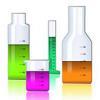 |
2013 - 2015 |
EPA is issuing a challenge to the academic community. Find new, innovative, and creative ways to use Toxics Release Inventory (TRI) data and related information to promote more informed decision-making and action on the part of communities, manufacturers, and government. |
Winners by year. | Completed |
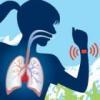 |
My Air, My Health Challenge Exit 2012 |
This challenge asked participants to submit ideas for personal devices to collect both air quality and physiological data to examine the link between environmetnal and personal health. |
Conscious Clothing used a particulate matter air sensor and stretchy fabric strips to estimate pollution exposure. |
Completed |
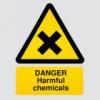 |
Stand Alone Field Measurement of Atmospheric Benzene & Butadiene Exit 2012 |
Design sensitive, reproducible and rapid field-based monitoring systems that measured atmospheric benzene and 1,3 butadiene at low concentrations. |
The winning solution combined imprinted polymers and carbon nanotubes. | Completed |
 |
Tracking Molecular Components of Electronics Exit 2012 |
This ideation challenge looked at Identifying concepts that could enable the development of a "molecular bill of materials" for electronic products and components. This could help consumers be more aware of the chemicals used in everyday electronic devices. |
The overall winner used distributed information gathering. Three secondary winners used barcodes, radio frequency identification, and a system of standards and databases. |
Completed |
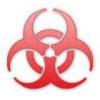 |
Recovering Bacillus Spores from Swabs Exit 2012 |
Participants submitted protocols for efficient recovery of bacterial spores from pre-wetted surface sampling tools. This will allow for more effective detection and quantification of hazardous biological materials before they become a public health risk. |
The winning process: remove spores from swabs with a solvent, concentrate on a membrane, and blot between two pieces of membrane. |
Completed |
 |
2012 |
Participants can celebrate the environment by sharing flash fiction: six-word essays about what the environment means to them. Submissions could be shared on EPA social media and published in Smith Magazine. | Recognition. | Completed |
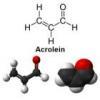 |
Detection and Analysis of Ambient Concentrations of Acrolein Exit 2011 |
The challenge was about finding methods for low-cost, rapid-analysis detection of trace quantities of acrolein in the atmosphere. |
No solution satisfied the requirements. | Completed |
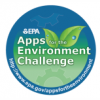 |
Apps for the Environment Challenge Exit 2011 |
Participants in this challenge looked at publicly available EPA data to come up with the most innovative way to use, show, or combine the data in an app. The goal was to find creative ways to think about what data EPA collects, how it is used, and increase public understanding of that data. |
Best Overall: Best Student App: EarthFriend Popular Choice: CGSearch |
Completed |
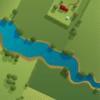 |
Efficient Technologies/ Methodologies for Measuring the Reduction of Pollution from Nonpoint Sources Exit 2011 |
The goal of this challenge was to develop or identify technologies and methodologies to measure the performance of management systems that would reduce nitrogen, phosphorous, and/or sediment pollution loads. |
No solution satisfied the requirements. | Completed |
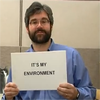 |
It's My Environment Video Project Exit 2011 |
Participants were asked to share a video clip up to 10 seconds long of someone doing something for the environment, then reading and passing along a sign that says "It's My Environment." | Recognition. | Completed |
 |
State of the Environment Photo Project 2011-2013 |
This project featured photos desinged to showcase our lives and our planet and was open from Earth Day 2011 through 2013. Photos were showcased on Flickr for people to view. | Recognition. | Completed |
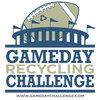 |
Game Day Recycling Challenge Exit 2010-2014 |
Colleges and universities participate by promoting waste reduction at their home football games. The can then and track and report waste reductions as they implement waste reduction strategies. | Winners by year.Exit | 2018 Registration open until Sunday, Nov 4th, 2018 |
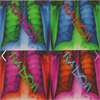 |
National Radon Poster Contest Exit 2007-2015 |
Student leaders raise radon awareness among their family, school and community by submitting posters depicting key information about radon. | Winners by year. Exit | Completed |
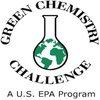 |
Presidential Green Chemistry Challenge 1996-2014 |
The awards recognize innovative technologies that incorporate green chemistry into chemical design, manufacture and use and help advance the protection of human health and the environment. | Completed |

